Top 14 Types of Overhead Cranes Compare
Overhead cranes, also known as bridge cranes, are critical pieces of equipment in various industries, including manufacturing, construction, and warehousing. They enhance productivity, ensure the safe handling of heavy materials, and streamline operations. This guide explores the different types of overhead cranes, their features, and their specific applications.
Here’s a table that compares different types of overhead cranes along with their buyer types, features, applications, and example projects.This table is formatted in Markdown, which you can copy and paste directly into doc editor.
| Type of Overhead Crane | Image | Buyer Type | Features | Application | Example Projects |
|---|---|---|---|---|---|
| Single Girder Overhead Crane | 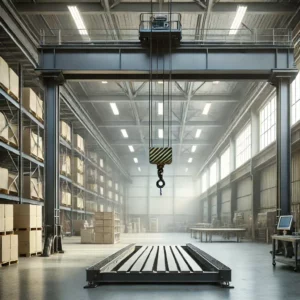 |
Small to Medium Industries | Cost-effective, easy to install, lower capacity | Warehousing, light manufacturing | Small warehouses, assembly lines |
| Double Girder Overhead Crane | 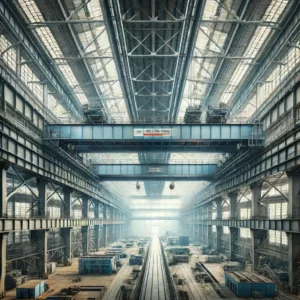 |
Heavy Industries | Higher load capacity, stable operation | Heavy manufacturing, large warehousing | Steel mills, large-scale production lines |
| Full Gantry Crane | 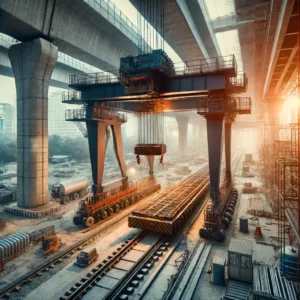 |
Construction Companies | Mobile, large load capacity | Construction sites, shipyards | Bridge construction, shipbuilding |
| Semi-Gantry Crane | 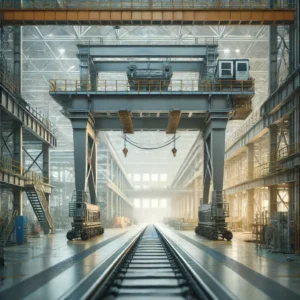 |
Factories with space constraints | Combines gantry and overhead crane benefits | Manufacturing, assembly | Factory assembly lines |
| Portable Gantry Crane | 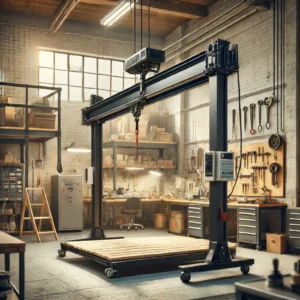 |
Workshops, small industries | Mobile, adjustable height and span | Light lifting tasks, maintenance | Small workshops, maintenance departments |
| Monorail Crane | 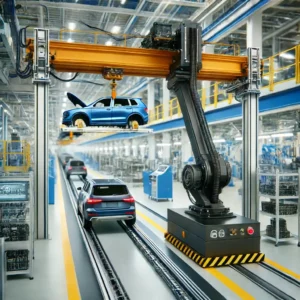 |
Production Lines | Follows a specific path | Production lines, automotive industry | Car assembly plants, production facilities |
| Free-standing Jib Crane | 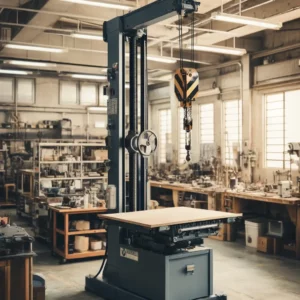 |
Workshops, factories | Independent, flexible placement | Workstations, maintenance | Individual workstations |
| Wall-mounted Jib Crane | 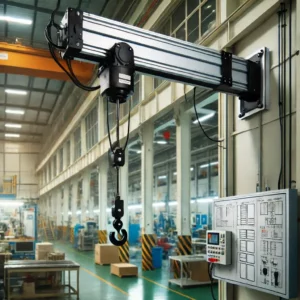 |
Factories, warehouses | Space-saving, 180-degree rotation | Workstations, loading bays | Loading docks, machining stations |
| Wall-traveling Jib Crane | 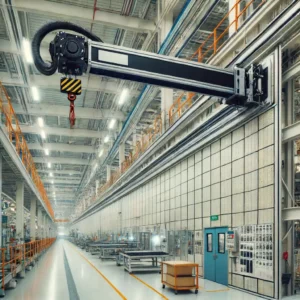 |
Factories with long aisles | Extensive coverage, wall-mounted | Long production lines, assembly areas | Long assembly lines, material handling |
| Top Running Crane | 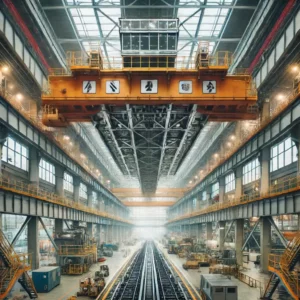 |
Heavy Industries | Runs on top of runway beams, high capacity | Heavy manufacturing, large warehouses | Large manufacturing plants |
| Underhung Crane | 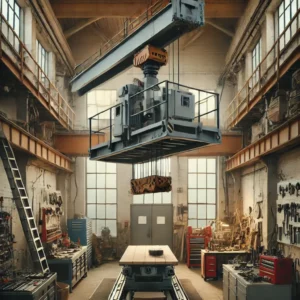 |
Low headroom areas | Suspended from runway beams, space-efficient | Workshops, low clearance buildings | Small workshops, low-ceiling factories |
| Explosion-proof Crane | 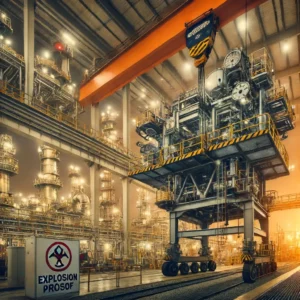 |
Hazardous Industries | Safe for flammable environments | Oil refineries, chemical plants | Chemical manufacturing, oil processing |
| Process Crane | 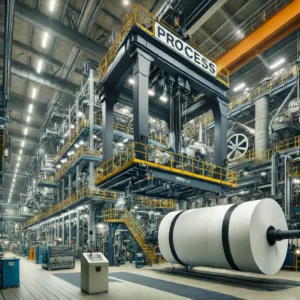 |
Specialized Industries | Custom-built for specific processes | Specific industrial processes | Paper mills, specialized production lines |
| Modular Crane | 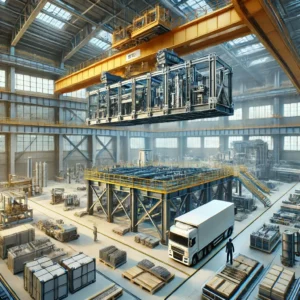 |
Various Industries | Pre-engineered, easy to assemble and customize | General material handling | Versatile industrial applications |
1. Single Girder Overhead Cranes
Description
Single girder overhead cranes consist of a single bridge beam supported by end trucks. The trolley and hoist are usually underhung and travel along the lower flange of the bridge.
Features
- Cost-Effective: Less material and simpler construction make them more affordable.
- Lower Load Capacity: Typically suitable for light to medium duty operations.
- Compact Design: Requires less headroom, making it ideal for facilities with limited space.
Applications
- Manufacturing plants
- Assembly lines
- Warehouses
2. Double Girder Overhead Cranes
Description
Double girder overhead cranes have two bridge beams that provide additional strength and support. The hoist trolley travels on rails atop the bridge girders.
Features
- Higher Load Capacity: Suitable for heavy-duty lifting operations.
- Greater Span and Height: Can cover larger areas and lift materials to greater heights.
- Versatility: Can be equipped with additional features like walkways, service platforms, and auxiliary hoists.
Applications
- Heavy manufacturing
- Steel mills
- Shipyards
3. Gantry Cranes
Description
Gantry cranes are similar to overhead cranes but are supported by freestanding legs that move on wheels or along a track, without requiring a building’s support structure.
Features
- Portable: Can be moved to different locations as needed.
- Outdoor Use: Suitable for outdoor applications where a permanent structure isn’t feasible.
- Variety of Sizes: Available in full, semi, and portable models to suit different needs.
Applications
- Construction sites
- Outdoor yards
- Marine applications
4. Jib Cranes
Description
Jib cranes feature a horizontal arm (jib or boom) that extends from a vertical mast or wall-mounted pillar. The hoist travels along the jib, and the crane can typically rotate.
Features
- Space Efficiency: Ideal for small work areas.
- Ease of Installation: Can be installed on existing columns or walls.
- Limited Reach: Best for localized lifting tasks.
Applications
- Workshops
- Manufacturing cells
- Maintenance areas
5. Monorail Cranes
Description
Monorail cranes run on a single rail, often integrated into the building’s ceiling or structure. The hoist moves along this fixed path.
Features
- Simple Path: Ideal for repetitive tasks along a fixed route.
- Low Maintenance: Fewer components reduce the need for maintenance.
- Customizable: Can be designed to fit specific layouts and workflows.
Applications
- Assembly lines
- Paint booths
- Production lines
6. Process Cranes
Description
Process cranes are highly specialized and designed for specific industrial processes. They often include advanced automation and control systems.
Features
- High Precision: Suitable for tasks requiring exact positioning.
- Customization: Tailored to meet specific process requirements.
- Integrated Systems: Often part of larger automated workflows.
Applications
- Automotive manufacturing
- Paper mills
- Chemical plants
7. Explosion-Proof Cranes
Description
Explosion-proof cranes are designed to operate safely in hazardous environments where flammable gases, vapors, or dust are present.
Features
- Safety: Components are designed to prevent ignition sources.
- Durability: Built to withstand harsh conditions.
- Compliance: Meet strict safety regulations and standards.
Applications
- Petrochemical plants
- Grain handling facilities
- Chemical storage
Conclusion
Overhead cranes are indispensable tools across various industries, each type offering unique advantages tailored to specific needs and environments. Understanding the differences between single girder, double girder, gantry, jib, monorail, process, and explosion-proof cranes helps businesses select the right equipment to improve efficiency, safety, and productivity. Whether for light-duty tasks or heavy-duty lifting, there’s an overhead crane designed to meet every operational requirement.

